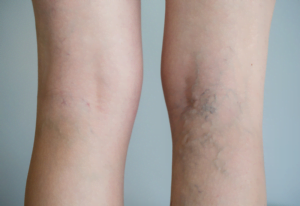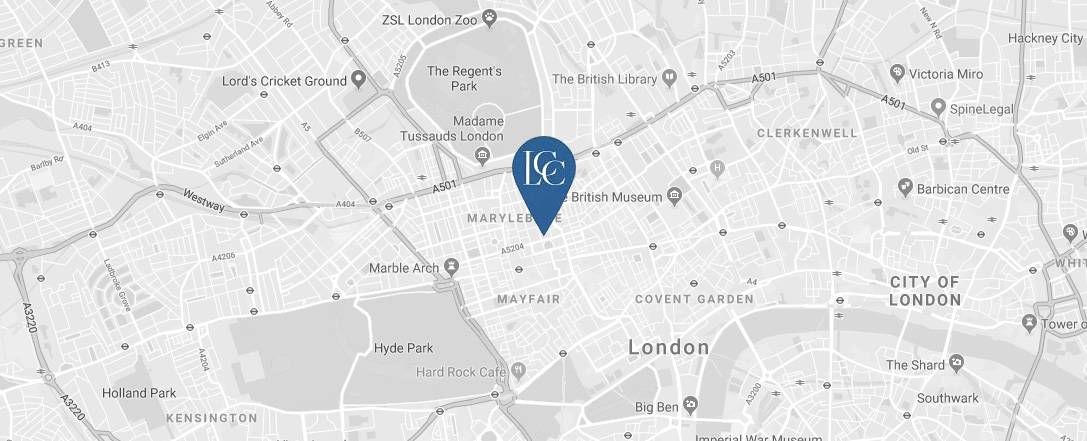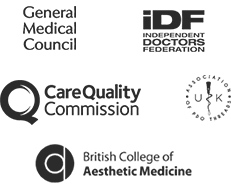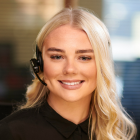The best treatment for varicose veins in the UK
Published on: November 1, 2022
Varicose veins are twisted, enlarged veins that might not pose a severe health risk to some people. Occasionally some people might experience some aching pains and discomfort, and others with more severe outcomes. Some varicose veins, such as leg veins, are often seen as cosmetic concerns with the leg.
Whether you are feeling discomfort due to varicose veins or just want to get rid of it for cosmetic reasons, this article will take you through the causes of varicose veins, varicose vein treatments available in the UK, and how to prevent them.
What are varicose veins?
Varicose veins are enlarged, dilated, and blood-overfilled veins that appear bulged and swollen. These veins are characteristically red or dark blue to purple when observed. This condition is often painful, and any superficial vein near the skin’s surface could become varicose. Varicose veins are most commonly observed affecting the veins of the legs.

How do varicose veins form?
When the vein walls weaken, or the one-way valve works inefficiently, blood backflows towards gravity and pools up in the vein rather than flow back to the heart as in normal circumstances. The result is the blue or purple enlarged veins observed on the legs, ankles or feet. Varicose veins are primarily observed in the legs. The reason is that this region is farthest from the heart and the effect of gravity makes upward flow difficult.
Causes of varicose veins
-
Pregnancy
Blood volume increases to support a growing baby, even in situations with varicose veins during pregnancy. As a result, there’s extra strain and pressure on the veins of the legs, which could enlarge them, causing varicose veins. Also, the pregnancy hormone levels are increased. These hormones relax the muscular walls of the blood vessels, thereby increasing the risk of varicose veins.
Varicose veins are also observed in the pelvic region during pregnancy sometimes. The condition improves after childbirth.
-
Gender
Female hormones allow the blood vessel walls to stretch and relax. This action increases the possibility of the valves leaking and inefficiently being one-way—blood backflows. It may cause pooling and eventually varicose veins or, in milder cases, spider veins.
-
Age
Ageing results in a weakened valve due to wear and tear and less elastic veins. The valve’s efficiency is reduced, and blood backflows into the veins. The resulting pooling forms varicose veins.
-
Standing or sitting for long.
Movement helps with proper blood flow. Standing or sitting for long hours decreases circulation and obstructs adequate flow and supply. This causes the leg veins to enlarge due to blood pools in them. There’s increased pressure within these veins which stretches and weakens them, also damaging the valves.
-
Family history of having varicose veins
A lot of predisposition to certain conditions is heredity. A family history of varicose veins with other members having it could mean that you’re more likely to get it than not.
Types of varicose veins
There are several types of varicose veins. According to the NHS, these are types of varicose veins.
-
Trunk varicose veins
This type is seen near the skin’s surface and is thick and lumpy. These veins appear long, palpable to touch and unpleasant.
-
Reticular varicose veins
These are seen as reddish, greenish and sometimes purple hues. When observed, these veins sometimes appear grouped and in close networks with each other. Reticular varicose veins spread like a mesh and cover broad areas of the skin. While they don’t necessarily protrude, they do appear unsightly.
-
Telangiectasia varicose veins( leg veins)
These are otherwise known as leg veins, spider veins or thread veins. Unlike the more conspicuous trunk varicose veins, these are milder and occur in small clusters of red or blue veins. Typically, these spread in a web-like fashion rather than a mesh. They are also the thinnest and smallest of all varicose veins.
While it’s a varicose vein on the legs, you could develop them on the face or anywhere on the body. They’re harmless and do not appear lumpy and bulging from underneath the skin like the trunk varicose vein.
Symptoms of varicose veins
Varicose veins stages include the late and early-stage varicose veins symptoms. The Early stage symptoms include;
- Leg aches
- Feelings of heavy legs
- Dry, itchy and thin skin in the affected region
- Discomfort
- Swollen ankles and feet
- Burning and throbbing sensations in the legs
- Muscle cramps in the leg
- Symptoms of late and more severe cases include the veins bleeding significantly from minor injuries and forming ulcers.
Treatment for varicose veins
Varicose veins don’t always need treatment, especially when there’s no discomfort. However, Treatment is only necessary to ease symptoms and treat complications such as leg ulcers and skin discolourations. Some medical treatments that may be recommended include;
-
Surgical treatment (vein stripping)
This vein surgery treatment is otherwise known as litigation and stripping. This procedure is invasive and involves the surgeon tying off the affected vein to prevent blood pooling and removing (stripping) the vein to prevent a relapse. You’ll need about three weeks to recover from this treatment.
-
Injections (sclerotherapy)
This treatment method is also known as Ultrasound-guided foam sclerotherapy. This treatment is less invasive and involves injecting special foam into the veins. This unique foam scars the veins and seals them shut. Avoid this treatment if you’ve initially had a deep vein thrombosis.
A few weeks after the procedure, the varicose veins should begin to fade, allowing deeper veins to assume their role. You may need to repeat the treatment after sometimes, to avoid relapse.
Ellipse Nd: YAG laser leg vein treatment
This non-invasive treatment requires lasers with a specific wavelength of light. The light directs energy at the veins absorbed by the red blood cells. This energy is converted to heat and transmitted inside the veins. Eventually, the veins collapse, seal off and gradually disappear due to the lack of blood flow. Treatment only takes some minutes and might require an additional session depending on the veins’ response.
Our Laser Therapist at the London Cosmetic clinic is highly skilled at this procedure. With her eight years of experience as a senior laser therapist and the latest cooling technology, such as SoftCool ™, she makes sure the procedure is less painful and not damaging to the surrounding skin. You can start seeing the results almost immediately. Smaller vessels will fade immediately, while larger ones will gradually fade over a few weeks.
We offer consultation and patch tests before the procedure. We also provide follow-up treatment for inevitable side effects, such as slight redness and swelling that may surface after a few days.
How to prevent varicose vein
- Avoid high heels and tight clothing.
- Move around regularly and change your sitting or standing position more often.
- Eat high-fibre and low-salt diets.
- Exercise regularly.
- Raising your legs when sitting, lying or sleeping to ease blood flow against gravity.
- Try to keep fit and avoid being overweight.
FAQs on Varicose veins
How serious are varicose veins?
People frequently ask, “are varicose veins serious?” In most cases, they aren’t severe. The appearance might leave some people embarrassed and push them to seek treatment. That said, varicose veins can cause discomfort and could lead to severe problems. In such cases, consult your doctor.
When should I be worried about varicose veins?
The symptoms you observe could be the compass you need. Some signs are more severe than others. Injuries at the site of a varicose vein will cause ulcers and significant bleeding. Usually, some wounds might heal, but with the condition the vein is in, healing might be prevented, allowing bacteria to infiltrate. You should see a doctor immediately if you have an injury from a site with the condition.
What happens if you don’t treat varicose veins?
People often ask, “can a varicose vein heal on its own? Or can a varicose vein go away naturally?” Several things will help with the appearance, but varicose veins will not heal on their own. It’s essential to seek medical treatments for the condition when needed. Delaying treatment could worsen the situation and cause more diseases.
How to treat varicose vein without surgery
Numerous non-invasive methods to treat varicose veins include sclerotherapy, micro sclerotherapy, and non-invasive laser treatment.
Conclusion
Varicose veins don’t necessarily have to require surgery. Home remedies for varicose veins could help in less critical situations. Immediately consult your doctor at the sign of more severe symptoms.











